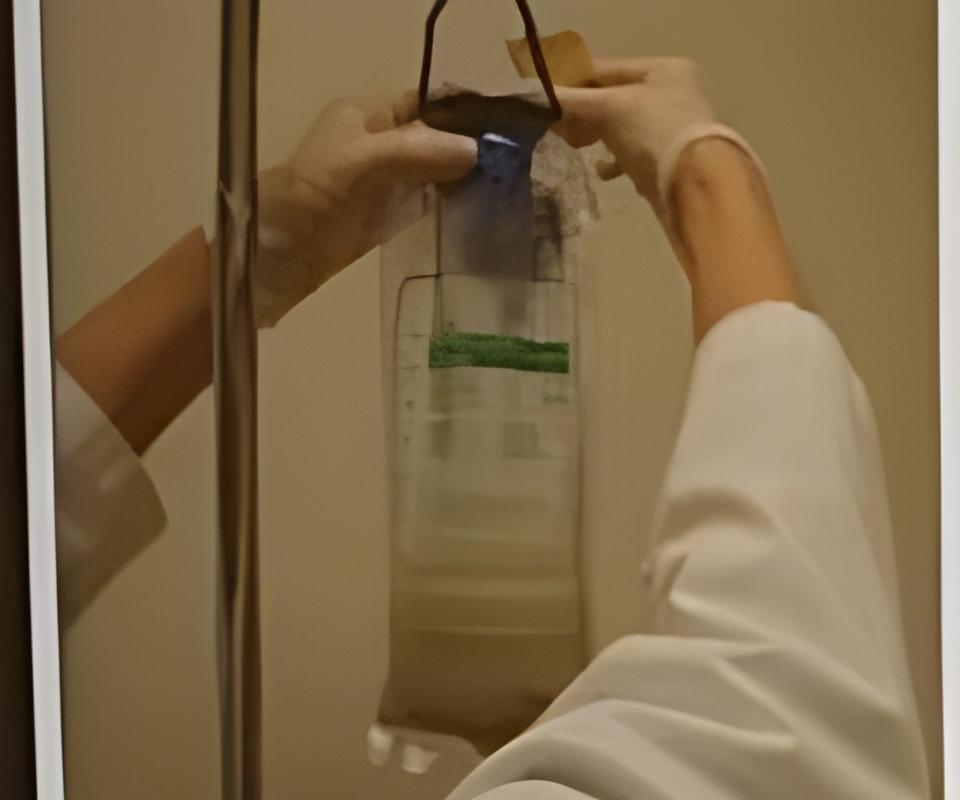
The practical nurse (PN) is observing a newly hired PN who is preparing to administer a liquid medication via a client's feeding tube system as seen in the picture. What action should the PN take?
Demonstrate how to administer medication via a feeding tube.
Confirm that the medication is only administered once daily
Determine if the medication is compatible with the solution.
Offer to assist in calculating the rate of flow for the mixture.
The Correct Answer is A
Demonstrate how to administer medication via a feeding tube.The picture shows that the newly hired PN is about to make a serious error by adding the medication directly to the feeding bag, which can cause clogging, contamination, or inaccurate dosing of the medication. The PN should demonstrate how to administer medication via a feeding tube correctly, which involves stopping the feeding, flushing the tube with water, instilling the medication, flushing again, and resuming the feeding.
The other options are not correct because:
- Confirming that the medication is only administered once daily is not relevant or helpful, as it does not address the error or teach the correct technique of administering medication via a feeding tube.Determining if the medication is compatible with the solution is not necessary or appropriate, as the medication should not be mixed with the solution in the first place, but given separately through the feeding tube.
- Offering to assist in calculating the rate of flow for the mixture is not relevant or helpful, as there should be no mixture of medication and solution in the feeding bag, but separate administration of each through the feeding tube.
Nursing Test Bank
Naxlex Comprehensive Predictor Exams
Related Questions
Correct Answer is B
Explanation
- Urinary output is an important indicator of fluid balance and kidney function. After delivery, a woman may experience increased urinary output due to the loss of excess fluid that was retained during pregnancy and the diuretic effect of oxytocin, which is released during breastfeeding. This is a normal and expected finding in the postpartum period.
- However, increased urinary output may also be a sign of urinary retention, which is the inability to empty the bladder completely. Urinary retention can occur due to trauma to the bladder or urethra during delivery, swelling or hematoma of the perineum, epidural anesthesia, or decreased bladder sensation. Urinary retention can lead to complications such as infection, bladder distension, or postpartum hemorrhage.
- Therefore, when a woman who delivered a normal newborn 24 hours ago reports that she seems to be urinating every hour or so, the practical nurse (PN) should measure the next voiding, and then palpate the client's bladder. This will help to assess the amount and quality of urine and the presence or absence of bladder distension. A normal urine output is about 30 ml per hour, and a normal bladder should feel soft and empty after voiding. If the urine output is low or high, or if the bladder feels firm or full after voiding, the PN should report these findings to the primary healthcare provider for further evaluation and intervention.
Therefore, option B is the correct answer, while options A, C, and D are incorrect.
Option A is incorrect because catheterizing the client for residual urine volume is an invasive procedure that should only be done if indicated by the primary healthcare provider.
Option C is incorrect because evaluating for normal involution and massaging the fundus are related to uterine function, not urinary function.
Option D is incorrect because obtaining a specimen for urine culture and sensitivity is not necessary unless there are signs of infection, such as fever, dysuria, or foul-smelling urine.
Correct Answer is C
Explanation
A) Incorrect- Pupillary response is not relevant to the assessment of mesalamine's effectiveness.
Pupillary response is often assessed in neurological or ophthalmic evaluations and is not a direct measure of gastrointestinal function or the response to mesalamine therapy.
B) Incorrect- Peripheral pulses are not directly affected by mesalamine therapy, and monitoring them would not provide insight into the medication's effectiveness. Peripheral pulses are
typically assessed to evaluate the circulatory status and are not specific to the evaluation of gastrointestinal conditions.
C) Correct- Mesalamine is a medication commonly used to treat inflammatory bowel disease (IBD), such as Crohn's disease and ulcerative colitis. It helps to reduce inflammation in the gastrointestinal tract. Monitoring bowel patterns is important to assess the effectiveness of mesalamine in managing the symptoms of these conditions.
D) Incorrect- Oxygen saturation is a measure of the amount of oxygen in the blood and is used to assess respiratory function. While oxygen saturation is important for overall patient assessment, it is not directly related to mesalamine's effectiveness in treating inflammatory bowel disease.
Whether you are a student looking to ace your exams or a practicing nurse seeking to enhance your expertise , our nursing education contents will empower you with the confidence and competence to make a difference in the lives of patients and become a respected leader in the healthcare field.
Visit Naxlex, invest in your future and unlock endless possibilities with our unparalleled nursing education contents today
Report Wrong Answer on the Current Question
Do you disagree with the answer? If yes, what is your expected answer? Explain.
Kindly be descriptive with the issue you are facing.
